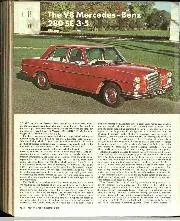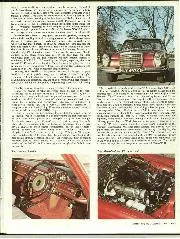

The V8 Mercedes-Benz 280 SE 3.5
I used to refer to Mercedes-Benz cars as the World's best, which got me into trouble with those who were born with a silver lady on their radiator caps. The…
The Great Book of Corgi 1956-1983 by Marcel R. van Cleemput. 512pp. 10 X” x 111/4″. Published by New Cavendish Books, 3 Denbigh Road, London, W11 2SJ. £35.00
Not only is the outstanding book a history of the Corgi range of models, it also reflects in its pages a 30 years snapshot of popular motoring in this country.
Marcel van Cleemput is well qualified to have written and compiled this mammoth work for he was Chief Designer of the Mettoy Company for most of his life and as such produced the very first drawings for the Corgi range and was involved in every single model until the company’s demise in 1983.
Instead of being a dull collection of pictures illustrating the models as they appeared, it is a book full of other interesting information. An early aerial photograph shows the Mettoy factory at Fforestfach near Swansea while superimposed is a photograph of the menu for the official opening signed by some of those attending. So what, you may say, but it all adds to the flavour and feel of the book. Another picture shows Frank Roche, a modelmaker, working on the development of a car transporter, and later on a still from the TV series Daktari, the popularity of which encouraged Corgi to produce a “Daktari” set which sold alongside the “Batmobile”, “Batboat” and Miss Wakabayashi’s Toyota 2000GT from the James Bond film You Only Live Twice.
Even in the Eighties, the company was still producing models associated with TV series, such as a dumpy looking Capri from The Professionals, but by now the writing was on the wall. During its latter days, the company had lost its deft touch of producing miniature masterpieces turning out instead models that were so bloated that there was only a passing resemblance to the vehicles they were meant to portray. Along with this tome comes an 80 page booklet clearly itemising every model made, the year and month of release, its colour, scale, the year it was withdrawn and cross referenced to the main book. An exhaustive reference book, with 729 colour and 313 black and white illustrations, that is an object lesson for all motoring historians in its thoroughness and conciseness. WPK